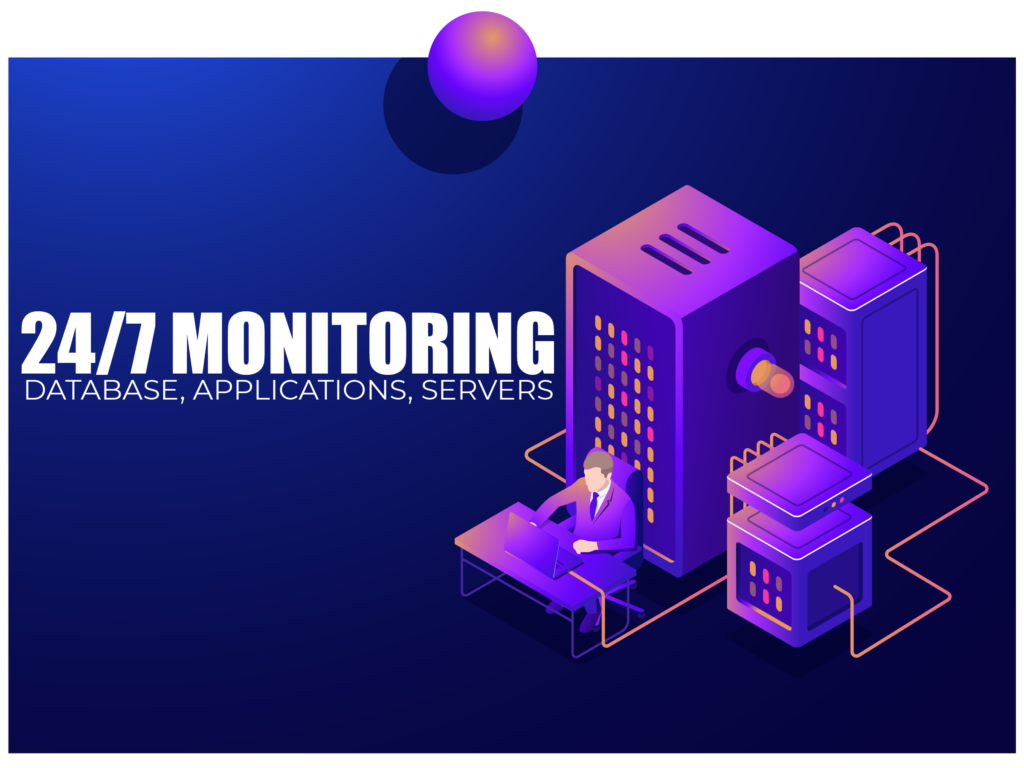

The alert fires at 2 a.m.: “The application is slow.” The team is paged, and the virtual war room is opened. The developer looks at the APM (Application Performance Management) dashboard and sees that the response time for a critical transaction has skyrocketed. The finger is pointed at the database. The DBA, in turn, looks at their dashboards and states, “Database waits are normal, the number of connections is stable, there are no locks. The problem isn’t here.” The SRE/Infrastructure team analyzes the server monitoring and reports, “CPU usage is at 50%, memory is fine, there’s no network latency. The server is healthy.”
This “blame game” scenario is the direct consequence of the biggest and most dangerous anti-pattern in modern IT management: siloed monitoring. Each team has excellent tools to monitor its own domain, but none can see the complete picture. The truth is that an application’s performance doesn’t live in isolation on the server, in the application, or in the database. It lives at the intersection of them all. Without a unified view that correlates events across these three layers, your teams aren’t troubleshooting; they are just defending their territories while the business suffers.
The Blind Spot of Each Layer
To understand why a unified view is so crucial, you must first recognize the inherent blind spots of each monitoring silo.
1. The Server Silo (Infrastructure)
- What it monitors: CPU, RAM, disk I/O, network utilization.
- What it tells you: The physical or virtual health of the machine. It answers the question, “Does the server have available resources?”
- The Blind Spot: A server at 100% CPU is not the root cause; it’s a symptom. The CPU metric doesn’t tell you which specific process is causing the consumption, let alone which SQL query within that process is the real culprit. It’s like a car’s dashboard saying the engine is overheating but not indicating which part is failing.

2. The Application Monitoring Silo (APM)
- What it monitors: Transaction tracing, method response times, error rates.
- What it tells you: Where, in the application code, time is being spent. It’s excellent for answering the question, “Which part of my application is slow?”
- The Blind Spot: APM tools often identify a database call as the bottleneck. They show the SELECT … query and the time it took. However, they have no visibility inside the database. They don’t know if the query was slow because of stale statistics, a missing index, or lock contention. They are brilliant at pointing to the culprit but cannot provide the evidence for a conviction.
3. The Database Silo
- What it monitors: Execution plans, wait stats, cache hit ratio, lock contention.
- What it tells you: The health and efficiency of the database’s internal operations.
- The Blind Spot: A DBA can identify an inefficient query, but without the context of the application and the server, the analysis is incomplete. Is that query being executed by a critical billing process or by a low-priority report? Is the increase in database I/O correlated with a problem in the cloud storage? Without a unified view, database optimization happens in a vacuum.
The Solution: From Metric Collection to Event Correlation with dbsnOOp
Effective 24/7 monitoring isn’t about having three excellent dashboards open on separate screens. It’s about having a single platform that ingests data from all layers and, more importantly, correlates it. This is the central philosophy of dbsnOOp.
dbsnOOp is not just a database monitoring tool; it’s an observability platform that breaks down the silos.
- Cause-and-Effect Correlation: The platform doesn’t just alert on a CPU spike on the server. It goes further and answers, “There was a CPU spike because the database process (sqlservr.exe, postgres, mysqld) was the top consumer, and it was the top consumer because it was executing query [query_hash], which was called by the application [application_name].”
- Single Source of Truth: By providing this correlated view, dbsnOOp eliminates the blame game. Developers, DBAs, and SREs can look at the same data, see the same chain of events, and collaborate on a solution instead of debating the source of the problem. The conversation shifts from “Where is the problem?” to “How are we going to solve this identified problem?”.
- From Symptom to Diagnosis: The platform transforms infrastructure metrics (symptoms) into actionable database diagnostics. An alert ceases to be a simple “high CPU” and becomes an optimization recommendation: “CPU is high due to a Table Scan in this query. Consider creating the following index to resolve the issue.”
Your operation doesn’t happen in silos. Your monitoring shouldn’t either.
Unify your vision, accelerate your incident resolution, and build a collaborative, data-driven culture. Schedule a meeting with our specialist or watch a live demo!
Schedule a demo here.
Learn more about dbsnOOp!
Learn about database monitoring with advanced tools here.
Visit our YouTube channel to learn about the platform and watch tutorials.

Recommended Reading
- dbsnOOp: The Monitoring and Observability Platform with an Autonomous DBA: This is the fundamental reading that details the platform’s vision, explaining how event correlation and automation break down monitoring silos.
- Cloud Monitoring and Observability: The Essential Guide for Your Database: The complexity of the three layers (server, application, database) is amplified in the cloud. This guide explores the challenges and strategies for maintaining full visibility in dynamic environments.
- The Difference Between Log Monitoring and Real-Time: The article discusses the failure of siloed monitoring, which often leads to a reactive analysis of logs. This post delves into the importance of real-time monitoring, which is the foundation for event correlation and proactive incident resolution.

